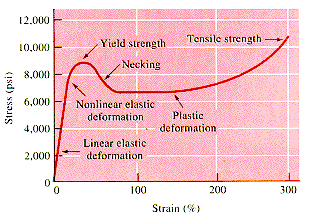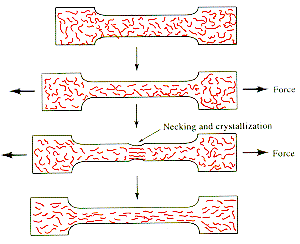| |
Because
of their very large molecular weight (~ 106) polymers behave differently
from the low molecular weight metals during plastic deformation leading
to a ductile fracture. The top diagram shows a tensile stress-strain curve
for a 6,6 Nylon. It should be noted that the strain at fracture is very
large (300%) compared to that for metals.
The lower diagram shows the
reorganization of the macromolecules during the plastic deformation process.
If the material is initially amorphous, the molecules will have a random organization
as depicted in the top picture. As a stress is applied to the sample
it deforms and the straining process tends to allign the the macromolecules
so that their long axis is parallel to the applied stress (the flow direction).
As deformation continues, necking occurs in one region and the molecular
structure starts to have the symmetry of a crystalline material. The neck
region grows through the sample and fracture occurs by breaking the molecular
structure. |
|

